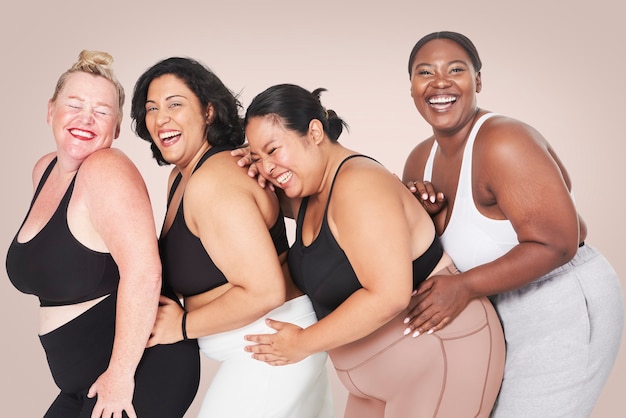
Weight has often been a polarizing issue for the fashion industry, from the runway to retail. A bias toward thinner bodies was evident in the types of models cast for fashion shows or in size ranges at apparel stores, and this issue began to garner much attention and criticism in recent years. Thebody positivity movementcalled for more inclusion and representation of different sizes and body types, which the fashion world attempted to cater to. Mid and plus-size models became more commonplace in fashion shows, magazines, campaigns, and more, and more brands expanded their selection of sizes. With the industry being influential on consumers’ personal perceptions and self-image, many brands saw the need to handle body representation responsibly.
However, an emerging trend is potentially disrupting the industry. Weight loss drugs like Ozempic and Wegovy have quickly gained attention, generating buzz among the Hollywood elite and the wellness world. These medications are incredibly effective for weight loss, making them a huge advancement for obesity treatment. But what does the rise of weight loss drugs mean for the fashion world, especially in line with body and size inclusivity?
What are weight loss drugs?
Weight loss drugs are medications that aid patients in losing weight, and they’re mainly prescribed to people struggling with obesity or who are overweight with weight-related health complications. Different drugs function in various ways, such as suppressing appetite, reducing cravings, blocking fat absorption, and more. One of the most popular medications is glucagon-like peptide (GLP-1) agonists, which is what Wegovy and Mounjaro are. UsingGLP-1 for weight losscan help people lose an average of 15% body weight by mimicking a gut hormone called GLP-1 that increases satiety and reduces cravings. When you’re fuller for longer and not experiencing cravings, you consume fewer calories. The drugs don’t work alone; they’re paired with a balanced diet, regular exercise, sleep, stress management, and more to be effective and sustainable.
How are weight loss drugs disrupting fashion?
With weight loss medications gaining more traction, there’s concern that the fashion industry may return to favoring ultra-thin models, such as in the 1990s and early 2000s. Even with more calls for body representation, thinner models are still the most commonly represented ones; Vogue’ssize inclusivity reportfor Autumn/Winter 2024 found that out of 8,800 looks presented across 230 shows and presentations, only 0.8% were plus-size, and 3.7% were mid-size. Lack of representation may prompt the idea of thinness as being the ideal, driving stigma against bigger bodies and promoting unrealistic beauty standards that may lead to unhealthy lifestyle habits. However, weight loss drugs are also ushering in a cultural shift, in which obesity is not viewed as a personal issue due to a person’s habits but a disease impacted by complex factors. Clearing up the obesity stigma may help improve the perception of plus-size representation in fashion and create more opportunities for representation in a more positive environment.
Retailers may also have to factor in the growing use of weight loss drugs and adjust to the paradigm shift. Significant weight loss often means needing a whole new wardrobe. This could lead to a rise in clothing sales, particularly for stores that can adapt their sizing and inventory to cater to this influx of customers looking for smaller sizes. However, a mass shift in size demographics due to medication could create sizing issues. Traditionally sized clothing might not fit people who lose weight in different proportions or have loose skin. Optimizingsizing curvesin clothing typically relies on historical data, which may not account for the recent weight changes in the consumer base. If the impact of weight loss drugs isn’t considered, retailers may struggle with the buying and allocation processes, impacting their profit margins and inventory.
What’s next?
Discussions of weight in the fashion world aren’t new, nor will they disappear anytime soon, and the emergence of weight loss drugs will likely keep the conversations going. However, the demand for body positivity and size inclusivity is also something that will only continue to gain more visibility and representation, even outside of the fashion industry. More plus-size bodies inmusic videos, films, and shows will still be sought after, which will impact runways and retail. While weight loss drugs may disrupt the scene, gone are the days when weight stigma and bias were not contested or accepted. Alongside bariatric surgery procedures offered byNewcastle weight loss surgeons, they may continue to help manage and treat obesity and related health complications, but their popularity has also prompted a more humane and compassionate approach to weight, which can impact how plus-size bodies are viewed in fashion.